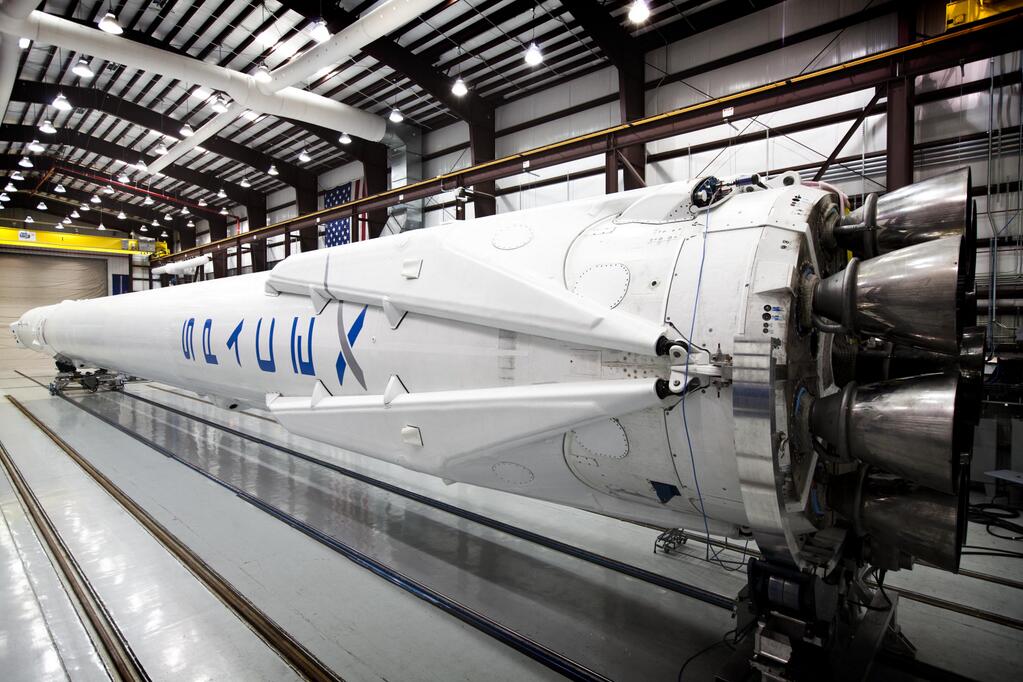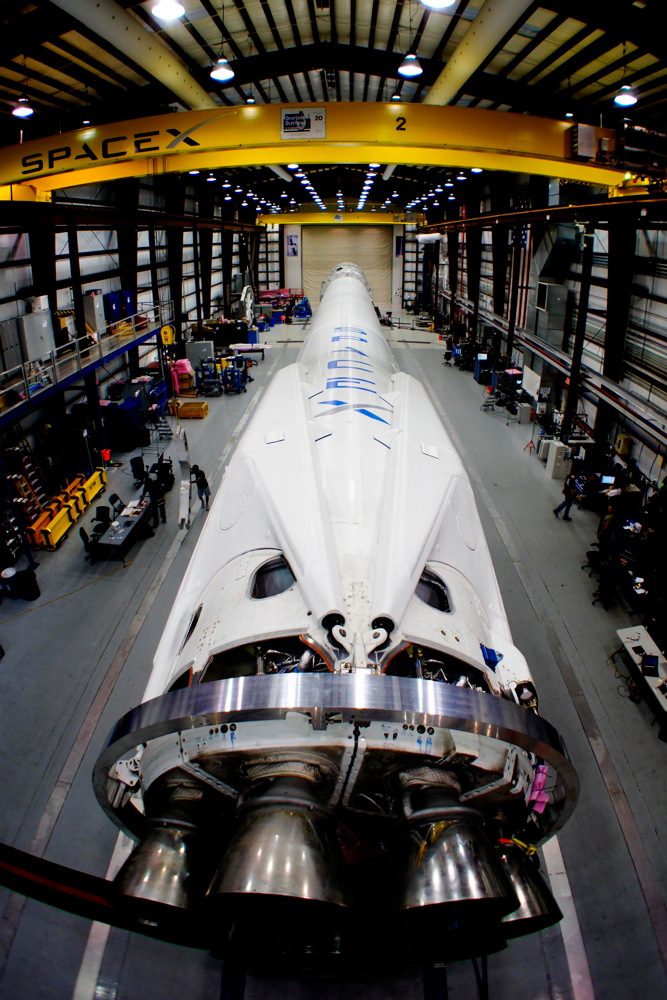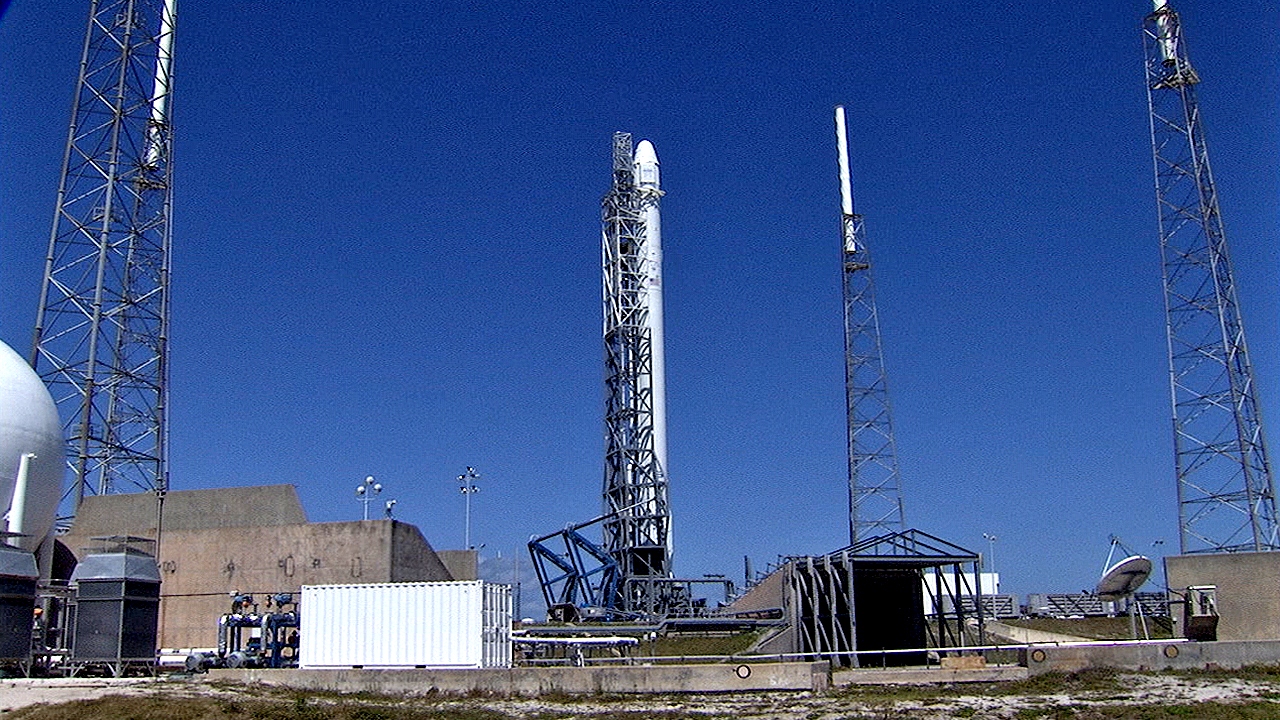SpaceX to Attempt Daring Reusable Rocket Test During Dragon Launch Today

It's an audacious plan, the odds of success are low, but SpaceX is going to do it anyway: The private spaceflight company founded by billionaire Elon Musk will launch a rocket with landing legs into orbit today, then try to bring part of it back and park it in the ocean.
The chances of success? Maybe between 30 and 40 percent, said SpaceX vice president of mission assurance Hans Koenigsmann.
"If we can pull this off … we'll be super-thrilled," Koenigsmann told reporters yesterday (April 13). You can watch the SpaceX's Dragon launch live on Space.com, courtesy of NASA TV. The webcast will begin Monday at 3:45 p.m. EDT (1945 GMT). [See photos of SpaceX's Falcon 9 and Dragon mission]

Ambitious test flight
SpaceX's ambitious reusable rocket test is only a secondary goal for the company today, but if successful it could lead to rocket innovations that may dramatically reduce the cost of space travel. The Hawthorne, Calif.-based company plans to launch its upgraded Falcon 9 rocket into orbit from a pad at Florida's Cape Canaveral Air Force Station at 4:58 p.m. EDT (2058 GMT). The main mission: To launch a robotic Dragon space capsule on SpaceX's third delivery flight for NASA as part of a $1.6 billion resupply contract.
But even as SpaceX prepared its Dragon cargo ship for launch, the company was working behind the scenes to take advantage of the flight for its internal reusable rocket program. The Falcon 9 rocket launching today has a first stage equipped with four large landing legs, each one of them 25 feet (7.6 meters) long.

If all goes well, the Falcon 9 rocket's first stage will separate as planned during launch, then perform a long re-entry engine burn to slow its supersonic descent back to Earth. SpaceX officials hope the rocket stage will deploy the legs as it descends and perform a final landing maneuver just over the ocean's surface before toppling over into the water to be retrieved by a recovery team.
Get the Space.com Newsletter
Breaking space news, the latest updates on rocket launches, skywatching events and more!
"The entire recovery of the first stage is entirely experimental," Koenigsmann said. "It has nothing to do with the primary mission here."
Today's mission will mark the third of 12 planned SpaceX Dragon cargo missions to the International Space Station for NASA. SpaceX launched the first flight in 2012, with a second following in 2013.
Last September, SpaceX also successfully demonstrated the ability to relight a Falcon 9 booster's first stage and slow its descent back to Earth. Today's planned reusable rocket test will attempt to take that demonstration a step further.
"We've been doing improvements to the recovery of the first stage in little steps, being very careful it doesn't affect the performance of Dragon," Koenigsmann said.
NASA space station program manager Mike Suffredini told reporters Sunday (April 13) that once he was convinced SpaceX's Falcon 9 landing legs posed no threat to Dragon's cargo delivery to the station, he was eager to see how the test would unfold today.

SpaceX's road to reusability
Developing a completely reusable rocket technology has been a long-range goal for SpaceX CEO Elon Musk as a way to reduce the cost of spaceflight. In 2011, Musk unveiled a plan for reusable rockets that envisioned SpaceX booster stages capable of flying back to landing pads on their own, as well as Dragon space capsules with the ability to touch down on land. (SpaceX Dragons currently splash down in the ocean).
Reusable rockets could substantially cut the costs of spaceflight, according to Musk. SpaceX's standard Falcon 9 rocket launches cost between $50 million and $60 million, according to the company's website. [Reusable Rockets: How They Work (Infographic)]
"But the cost of the fuel and oxygen and so forth is only about $200,000," Musk said in 2011 when he first unveiled SpaceX's reusable rocket program. "So obviously, if we can reuse the rocket, say, a thousand times, then that would make the capital cost of the rocket for launch only about $50,000."
SpaceX is still a ways off from returning a Falcon 9 rocket to a landing pad on dry land. In March, Musk wrote in a Twitter post that the company will aim for water splashdowns until it can master the challenges of returning a rocket booster to Earth safely.
To that end, SpaceX has conducted a series of vertical launch and landing tests of its Grasshopper reusable rocket prototype, sending the prototype rocket on ever-higher flights over the company's proving grounds in McGregor, Texas. Those tests concluded in December.
More test flights planned
On March 28 of this year, SpaceX test fired its first F9R reusable rocket, a larger vehicle to continue reusable rocket research where the Grasshopper flights left off. Those test flights will eventually be launched from Spaceport America in New Mexico, SpaceX officials have said.
"The F9R testing program is the next step towards reusability following completion of the Grasshopper program last year," SpaceX officials wrote in a video description of the F9R static engine test. "F9R test flights in New Mexico will allow us to test at higher altitudes than we are permitted for at our test site in Texas, to do more with unpowered guidance and to prove out landing cases that are more-flight like."
Koenigsmann said SpaceX will take a step-by-step approach to its reusable rocket demonstrations with actual Falcon 9 rockets. While the company aims to make a land landing by the end of 2014, each test will be dependent on the success and lessons from the previous flight. In the meantime, SpaceX is scouting for possible rocket landing zones.
"That's currently in evaluation," Koenigsmann said. "We're looking at different landing sites."
Visit Space.com for complete coverage of SpaceX's Dragon launch to the International Space Station. You can also get blow-by-blow mission updates the Mission Status Center of Space.com partner Spaceflight Now, which will also feature a launch webcast.
Email Tariq Malik at tmalik@space.com or follow him @tariqjmalik and Google+. Follow us @Spacedotcom, Facebook and Google+. Original article on Space.com.
Join our Space Forums to keep talking space on the latest missions, night sky and more! And if you have a news tip, correction or comment, let us know at: community@space.com.

Tariq is the Editor-in-Chief of Space.com and joined the team in 2001, first as an intern and staff writer, and later as an editor. He covers human spaceflight, exploration and space science, as well as skywatching and entertainment. He became Space.com's Managing Editor in 2009 and Editor-in-Chief in 2019. Before joining Space.com, Tariq was a staff reporter for The Los Angeles Times covering education and city beats in La Habra, Fullerton and Huntington Beach. In October 2022, Tariq received the Harry Kolcum Award for excellence in space reporting from the National Space Club Florida Committee. He is also an Eagle Scout (yes, he has the Space Exploration merit badge) and went to Space Camp four times as a kid and a fifth time as an adult. He has journalism degrees from the University of Southern California and New York University. You can find Tariq at Space.com and as the co-host to the This Week In Space podcast with space historian Rod Pyle on the TWiT network. To see his latest project, you can follow Tariq on Twitter @tariqjmalik.









